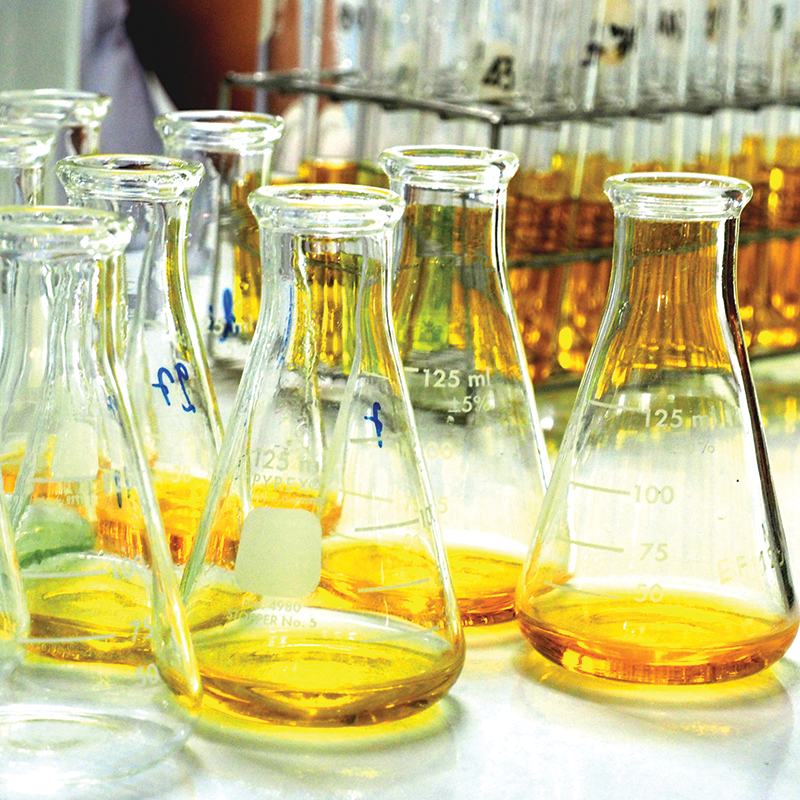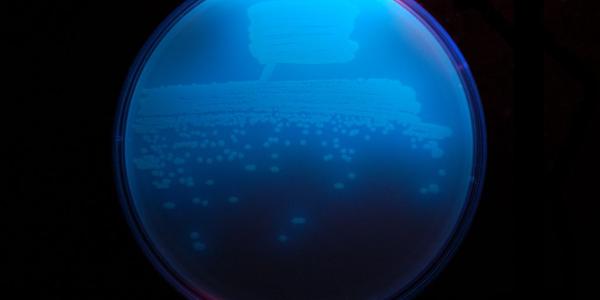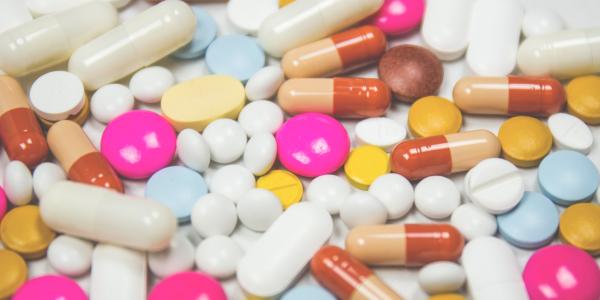Timothy Wencewicz's laboratory is a truly interdisciplinary research environment merging the fields of organic chemistry, enzymology, molecular biology, and microbiology. His team utilizes their knowledge of organic chemistry and enzyme function to elucidate the molecular mechanisms of antibiotic action, biosynthesis, resistance, and delivery. Their main research focus is antibiotic drug discovery.
Antibiotic Drug Discovery. Infectious diseases continue to be a leading cause of death worldwide and the rapid development of bacterial resistance to current antibiotic chemotherapies is one of the world’s most urgent health problems. Stepping up to this challenge, our lab is dedicated to the discovery of new antibacterial scaffolds and drug delivery systems that act against underexploited biological targets and overcome known resistance mechanisms. Our inspiration for new antibiotic therapeutics comes from structurally diverse microbial natural products, “Nature’s Medicine”, and relies on a coordinated effort of interdisciplinary approaches (organic synthesis, enzymology, spectroscopy, molecular biology, microbiology) to establish medicinal chemistry programs around unique, and sometimes complex, natural product molecular scaffolds.
Natural Product Biosynthesis. Nature has spent millions of years perfecting the chemistry to assemble infinitely complex molecular scaffolds found in secondary metabolites (natural products), primarily using biological catalysts (enzymes). Our lab is spending time to elucidate the timing and mechanism of biosynthetic enzymes involved in the assembly of medicinally important natural product antibiotics. We are particularly interested in learning how Nature biosynthesizes and stabilizes highly strained and reactive functional groups within molecular scaffolds, such as the hydroxy-β-lactam ring found in Tabtoxin (TβL-Thr) produced by plant pathogenic species of Pseudomonas syringae. A “reactive” functional group often plays a key role in the molecule’s mechanism of action, as discussed below.
Mechanism-Based Enzyme Inhibitors. Natural product scaffolds are highly evolved to bind a biological protein target with exquisite potency. Unique subsets of natural products possess latent reactivity that is realized only within the confines of its biological target and often results in the formation of a covalent enzyme-inhibitor complex. These types of molecules are often referred to as “Mechanism-Based Inhibitors” and can offer many therapeutic advantages (lower dosing and longer target dwell times). Our lab will elucidate the molecular mechanism of enzyme inhibition of naturally occurring mechanism-based enzyme inhibitors and exploit this knowledge to design and synthesize more effective synthetic inhibitors. We are interested in developing Tabtoxinine-β-Lactam (TβL) as a potent mechanism-based inhibitor of the enzyme Glutamine Synthetase to treat multidrug resistant Mycobacterium tuberculosis infections.
Targeted Drug Delivery Across Bacterial Membranes. Another attractive feature of developing natural products as antibacterial agents is that scaffold evolution during heated microbial molecular warfare created molecules with the ideal physiochemical properties for crossing bacterial cell membranes, a hurdle that frequently leads to the failure of new antibiotic compounds. Such is the case for Tabtoxin, a “Trojan Horse” dipeptide prodrug which enters cells via dipeptide permeases and liberates the TβL warhead after cleavage by a dipeptidase. Some molecules even hijack energy-dependent active transport systems to cross the formidable bacterial cell wall. An example is the sideromycin natural products (siderophore-antibiotic conjugates) which utilize bacterial iron transport systems to smuggle antibiotic cargo across bacterial membranes. Our lab aims to understand how these natural drug delivery systems function in order to design and synthesize improved systems with sophisticated molecular linkers between the delivery vector and the drug that release the antibiotic payload in a microbe-triggered fashion.







